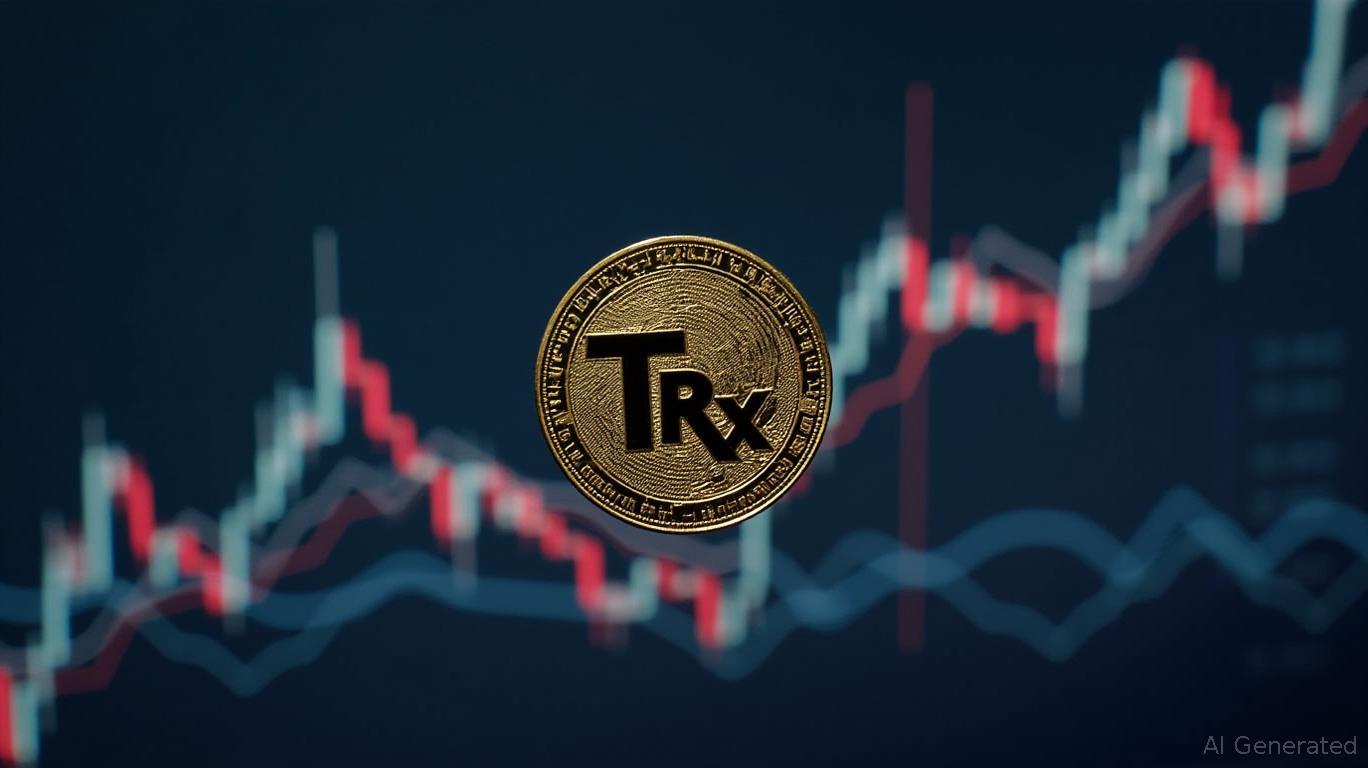Tron's TRX at Critical Inflection Point Amid Geopolitical Volatility and Technical Weakness
The crypto market's sensitivity to geopolitical turbulence has never been more evident than in May 2025, as Tron's native token, TRX, faces a pivotal crossroads. With US-China trade tensions reigniting and institutional outflows accelerating, TRX's technical indicators now signal a precarious balance between short-term bearish momentum and long-term bullish fundamentals. For investors, this is a moment of urgency—act decisively to mitigate risk or risk being swept away by the next wave of volatility.

Geopolitical Volatility: The Catalyst for TRX's Decline
The May 26, 2025, geopolitical flare-up—marked by stalled US-China trade talks and the reinstatement of former President Trump's tariffs—has sent shockwaves through global markets. Cryptocurrencies, often seen as a hedge against such instability, are now suffering alongside equities and commodities. Bitcoin's 1.2% drop to $67,000 and Ethereum's 0.8% slide to $3,450 underscore a broad-based risk-off sentiment, and TRX is no exception.
TRX's price dropped to $0.186 on May 26, nearing its May low, after a 15.57% sell-off on May 8—a direct response to escalating geopolitical rhetoric. The token's correlation with broader market fear is undeniable: the VIX volatility index surged 10%, while crypto's $3.34T market cap shed 2.6% in a single day.
This chart reveals TRX's rollercoaster ride, with RSI hovering near neutral but daily moving averages signaling short-term weakness.
Technical Weakness: The Bearish Setup
TRX's technical picture is a cautionary tale of divergent signals. While the daily and weekly charts show bullish moving average (MA) crossovers, the critical 4-hour chart paints a bleaker picture:
- Bearish MA alignment: The 50-day SMA has been falling, confirming short-term weakness.
- Key resistance breakdown: TRX failed to hold above $0.279 on May 7, a level it hasn't retested since.
- Support at risk: The $0.186 low represents a critical floor—if breached, TRX could plummet toward its 2025 yearly low of $0.198.
The RSI (54.85) remains neutral, but volume tells a different story. A 24-hour trading volume of 156.7 million TRX signals aggressive selling, with institutional players likely exiting ahead of further uncertainty.
Market Sentiment: A Perfect Storm of Fear and Fundamentals
The crypto market's fear-driven psychology is amplifying TRX's risks:
- Institutional outflows: Bitcoin ETFs bled $385.65 million in May, a trend mirrored in altcoins like TRX.
- Cross-market contagion: The S&P 500's 0.5% drop to 5,430 points and Coinbase's 1.8% slide to $225.30 highlight crypto's entanglement with traditional markets.
- Regulatory overhang: Uncertainty around US-China trade policies and crypto regulations (e.g., IRS audits) keeps investors on edge.
Even bullish catalysts—like Tron's $100M fund for DeFi projects—struggle to outweigh these headwinds.
Risk Mitigation Strategies: Protect and Pivot
In this environment, investors must prioritize capital preservation:
- Short-term hedging:
- Short TRX/USD pairs if geopolitical tensions escalate further.
Move to stablecoins: USDT or USDC offer liquidity without exposure to volatility.
Technical stops and limits:
- Set a stop-loss at $0.18 to exit before TRX hits its yearly low.
Buy TRX dips only if it recovers above $0.23 (May's average price) and holds the 50-day SMA.
Long-term positioning:
- Wait for $0.198 support to confirm a bottom before accumulating TRX for its long-term potential (e.g., Tron's Web3 partnerships and scaling initiatives).
Conclusion: A Bearish Now, a Bullish Later
TRX is at a critical inflection point. While its long-term fundamentals—bolstered by Tron's ecosystem growth—remain intact, the immediate outlook is bearish. Geopolitical risks and technical weakness demand strategic caution. Investors ignoring these signals risk compounding losses.
Act now: Secure stops, lean into stablecoins, and wait for clarity. The next TRX rebound could be powerful—but it won't come until the storm passes.
Stay vigilant. Stay informed. Stay ahead.

Comments
No comments yet